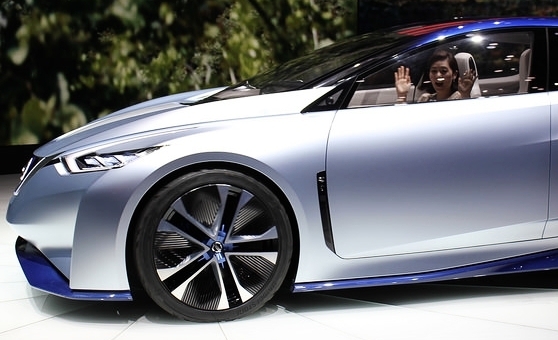Autonomous vehicles may still seem like a thing of the future, but that future is going to be in Detroit sooner than some may expect. Starting this fall, you can see self-driving shuttles transporting passengers throughout the city, but only for a select few riders, and for a very limited amount of time. May Mobility, an Ann Arbor based start-up company, is set to begin testing autonomous vehicles in downtown Detroit in October.
The Detroit News reported that Quicken Loans founder and downtown developer, Dan Gilbert, announced the project at the Technology in Motion conference in Detroit on September 6, 2017. Employees of Gilbert’s companies, Quicken Loans and Rock Ventures, will ride the shuttles back and forth from their offices to parking areas in the central business district. Gilbert said the program is being funded entirely by his company and without any government grants. The shuttles will run from the First National building in Cadillac Square, to the Brick Town parking garage at Beaubien and Fort streets. The set path of the shuttles includes Woodward, Monroe, Beaubien, and East Congress. The shuttles will get a total of 15 hours of testing, operating October 9-13, from 7 PM to 10 PM. All employees of Gilbert's are invited to participate in the program.
While autonomous vehicles have been tested in our city before, this is the first time they will be transporting people. According to Crain's Detroit Business, the company is testing two, six-passenger vehicles that are manufactured by Minnesota based company Polaris. Polaris describes the shuttles as “very comfortable,” with each passenger getting their own door and their own seat. For those who find the idea of a driverless shuttle a bit nerve racking, the company is putting a safety driver on each shuttle. The safety driver will not be operating the vehicle, but can override it if need be. However, the company hopes to not need safety drivers in the future. More so, the company has been driving routes in central Detroit for months, in order to gather as much data as possible.
These aren’t the first autonomous passenger shuttles to come to Southeast Michigan. The Michigan Law Firm, PLLC recently wrote about driverless shuttles at the University of Michigan. Starting this fall, 15-passenger autonomous shuttles that can reach speeds of up to 35 mph have been providing students with a new way to get to class. The shuttles travel between University of Michigan's North Campus (home to MCity, a testing ground for autonomous vehicles) and a nearby university research facility. The shuttles are being used to test consumer reaction to and acceptance of autonomous technology on the road.
While the shuttles coming to Detroit are only going to be tested for a short time, they signify a larger step forward for autonomous technology. This small glance into the world of driverless vehicles in Detroit could be the beginning of something we start to see much more often. While the hope is that autonomous technology can cut down on the number of automobile accidents due to human error, there is likely still a ways to go until we reach a time with self-driving cars and no automobile accidents. However, corporations willing to invest in this technology, coupled with car manufacturers and automotive technology developers in and near Detroit, make the city the perfect playground for self driving vehicles, and can propel us forward to safer roads.
The rapidly increasing progress of autonomous vehicle technology is exciting, but it also presents challenges to drivers and traffic laws we have never seen before. As with any new automotive technology, driver safety is the most important thing. If you or a loved one has been involved in a motor vehicle accident, call The Michigan Law Firm, PLLC at 844.4MI.FIRM for a free legal consultation with an experienced car accident attorney.












